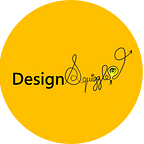PAINstorming your way through problems
As much as I like to brainstorm with others, I also like PAINStorming. It has been one of those frameworks that once you come across you really want to imbibe into your toolkit. It is great done in a group followed by a bit of design research — where you go and talk to customers, observe them when they are getting the job done, and then you come back and discuss what you found using this simplistic framework.
P.A.I.N. is an easy to remember framework that stands for,
People: This is all about who is the user/customer/ stakeholder who is trying to get a job done. Whose problem are we helping to solve? Whose job are we trying to get done? There are so many tools you can use, but a really simple one is to create a customer persona. Draw up a simplistic profile of the user. Create a story like a description of who this person is and what are her/his likes and dislikes.
Activities: What are things they do every day to get a job done, why do they do it and how much time, energy and effort do they spend accomplishing it? The key is to detail the steps of each and every task they perform to get the job done. It also helps to explore what sort of daily routine this person actually has. This gives us a broad spectrum understanding in which part of their daily lives our solution comes in. It could help us identify what is the trigger for their use, it could be,
- Time-based e.g. early in the morning I like to have a cup of coffee
- Location-based e.g. I like to read news updates as soon as I reach the office
- Emotion-based e.g. I prefer cleaning my house when I am upset
- Event-based e.g. I like to eat out on special occasions
- People-based e.g. When my mom and I go shopping she is the one who spends
Though the above seems very much like what we would use to identify habit creation, we have to remember we are all creatures of habit — and most of our activities are based on it.
Insights: This is truly a gold mine space. As we already have seen people hire or buy different products and services to get a job done. In the absence of existing solutions, they tend to create their own tools, processes, routines, frameworks and establish new activities to get the job done. Sometimes what they are doing might be cumbersome or complex — what in our eyes might seem unnecessary — but it is just that they don’t know any other or a better way of getting it done.
On the other extreme when your customers are experts, experimenters, innovators, early adopters or problem solvers — they would have already invented workarounds that perform a job the way it is supposed to be done — as opposed to how it is getting done today. They might have taken your product and built more features or hacks around it — we used to jokingly say that some of the best products in the infotech world are things that were once written as excel macros by some frustrated user. As startups, we can spot, adapt, build and scale these workarounds into new products rather than reinventing the wheel.
Needs: What are the biggest pains these customers are facing while they are going through the activities? We have to dig deeper to find what the root causes of these customer pain points are. Your customer can have unmet needs or desires e.g. Charging a laptop while driving is one unmet need of every meeting trodden executive. What workarounds or current processes do they find tedious or lengthy? What is causing them excessive stress or dissatisfaction? What seems to be the concern or pains they share about the existing process?
Once you get a crack at the PAINs it is now time to move around to prioritizing problems — which we will see in the next blog. When we get down to unearthing user problems or stakeholder problems — though it is a great place to start — it can get overwhelming. Can we solve all the problems we unearth? Possibly not — so what are the parameters that we can use to decide what we will solve, and to what end can we go to solve it?
At the end of the day, it takes two to tango — a perfect balance between solving for customer needs while keeping business needs in purview. That is the only way we can run a profitable business that also offers excellent customer value.
Hope you find this framework as useful as I have found it. See you on the next blog…
